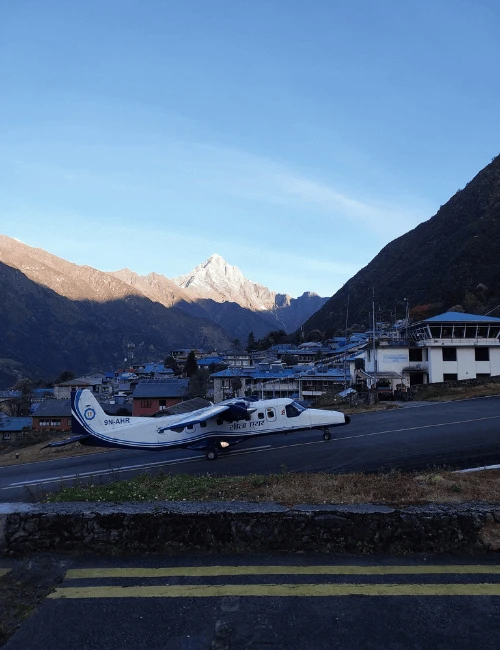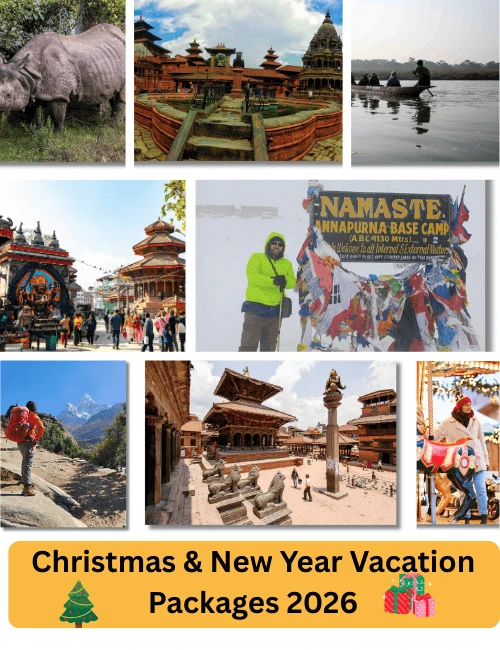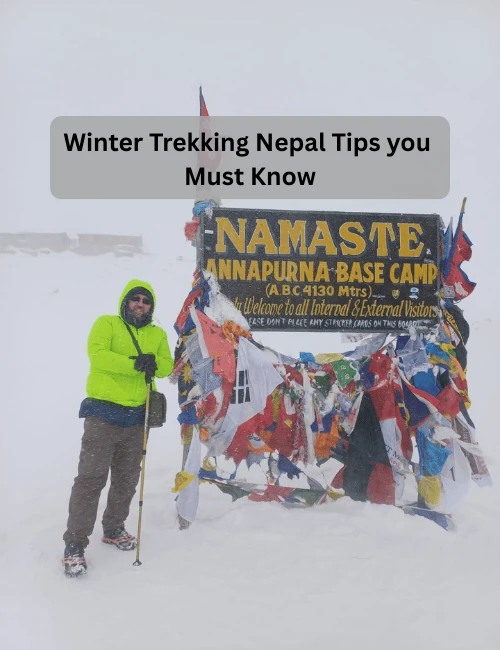Looking for an easy peak to climb in Nepal that offers adventure without extreme technical challenges? Mera Peak (6,476m) is the perfect choice for beginners and first-time climbers seeking a Himalayan summit experience. Known as the easiest trekking peak in Nepal, Mera Peak combines moderate climbing with breathtaking views of Everest, Lhotse, and Makalu. Its gradual ascent route through beautiful Sherpa villages and remote valleys makes it ideal for trekkers transitioning into mountaineering. Join Mountain Eco Trails for a well-organised Mera Peak climbing trip designed for all experience levels, blending scenic trekking with high-altitude achievement in the heart of Nepal’s Himalayas.
Easy Peak to Climb in Nepal, Why Mera Peak is easiest to climb in Nepal?
Why Mera Peak is the Best Choice for Beginners
If you are looking for an easy peak to climb in Nepal, Mera Peak (6,476 m) often tops the list as a beginner-friendly peak. Despite its high altitude above 6000 meters, Mera is considered the easiest trekking peak in Nepal due to its non-technical route and high success rates. This makes it an ideal Mera Peak climb for beginners who want a taste of Himalayan adventure without extreme technical challenges.
In this comprehensive guide, we explain why Mera Peak is the easiest trekking peak in Nepal, what “easy” really means in climbing, how hard the ascent feels, and all the practical details (itinerary, cost, permits, best season) you need to plan your trip. We’ll also compare Mera Peak vs Island Peak difficulty to help you choose your first summit. By the end, you’ll see why Mera Peak is the easy 6000m peak in Nepal that offers big rewards for novice climbers. Let’s get started!
Why Mera Peak is the Easiest Trekking Peak in Nepal
Mera Peak is often categorised as Nepal’s easiest trekking peak – a perfect introduction to Himalayan climbing for several reasons:
Non-Technical Terrain of Mera Peak
The route up Mera Peak involves a long trek and glacier walk with gradual snow slopes, but no technical wall climbs or steep ice pitches. It’s graded Alpine Grade “PD” (Peu Difficile – a little difficult), indicating minimal technical difficulty. In fact, Mera Peak’s climb is essentially a snow hike on a high-altitude glacier, requiring basic gear but no advanced rope-climbing skills. This gentle terrain makes it far more accessible than peaks with vertical ice walls.
High Success Rate of Mera Peak
Thanks to the non-technical nature, Mera Peak has a very high summit success rate – typically in the 80%–90% range of climbers reach the top. By comparison, more technical peaks have lower success percentages. This track record gives beginners confidence that Mera is achievable.
“Trekking Peak” Classification
Mera Peak is officially designated a “Trekking Peak” by Nepal authorities. That means it’s meant to be climbed by trekkers with some guidance, rather than requiring elite mountaineering experience. Mera is actually the highest trekking peak in Nepal, yet it’s easier than many lower peaks because of the straightforward route.
Gradual Ascent & Acclimatisation
The approach to Mera Peak is longer (typically 7–12 days trek before summit), which allows for plenty of acclimatisation and gradual altitude gain. This lowers the risk of altitude sickness compared to rapid climbs.
Experienced Guides and Support
As a popular beginner peak, Mera trips are led by our experienced Sherpa guides who specialise in helping newcomers. Guides provide training on using crampons, ice axe, and ropes as needed during the trek. They set a slow, steady pace and look after your safety. The extensive support (porters, cooks, fixed camps) means you can focus on climbing without logistical worries.
In short, Mera Peak’s combination of non-technical climbing, a well-paced itinerary, and strong support infrastructure makes it the easiest peak to climb in Nepal for beginners.
What Makes a Peak “Easy” or “Non-Technical”?
In mountaineering terms, calling a climb “easy” is relative – even an easy 6,000m peak is a serious endeavour. Here’s what defines an “easy” or non-technical peak in Nepal:
- Minimal Technical Climbing: An easy peak does not require advanced mountaineering techniques like vertical ice climbing, rock climbing, or complex rope work.
- Basic Gear Usage Only: While even easy peaks require some mountaineering gear (crampons, ice axe, harness, ropes for safety), these are used for stability and safety on snow – not for vertical climbing.
- Established Routes & Support: Easy peaks typically have well-trodden routes, often the same path used by trekking groups and yak herders, at least until high camp. The routes are known and usually marked.
- Moderate Elevation Gain per Day: Non-technical also implies the climb is more about endurance than technical prowess. Beginner climbs allow gradual elevation gain and have fewer “crux” sections.
- Higher Chance of Summiting: Ultimately, an “easy peak” is one that a large majority of fit trekkers can summit under our experienced guide. The routes are designed such that if you have basic fitness and determination, you stand a good chance.
Important: “Easy” doesn’t mean “effortless”. Even non-technical peaks in Nepal reach high altitudes where oxygen is thin, the weather is unpredictable, and you’ll be trekking for many days. Altitude sickness, cold, and fatigue are real concerns even on easy peaks. So, while Mera Peak is beginner-friendly, climbers must still prepare seriously. The good news is, with the right preparation and mindset, a novice can absolutely succeed on Mera Peak – which is exactly why it’s the best choice for your first climb.
How Hard Is It to Climb Mera Peak?
You might be wondering: if Mera is “easy”, does that mean the climb is not hard at all? The truth is that Mera Peak will test you, especially if you are a beginner, but it is very achievable with the proper approach. Here’s an honest look at the difficulty:
Physical Challenge – Altitude is the Main Hurdle: The toughest aspect of Mera Peak is climbing to nearly 6,500 meters in elevation. Hiking at that altitude is extremely tiring – even easy slopes feel like a slog when each breath holds less oxygen.
No Technical Climbing, But Endurance Required: From a skills perspective, Mera Peak does not demand advanced techniques – you won’t be swinging ice axes into vertical walls or rock climbing. But endurance-wise, it’s a long trek followed by a long summit day.
Basic Snow Skills will need to use mountaineering boots, crampons and an ice axe for Mera Peak, especially above base camp. For newcomers, these tools can feel clumsy at first. The good news: our guides will teach you the basics of walking in crampons, self-arrest with an ice axe, and roped glacier travel during an orientation at Khare base camp.
Long Trek and Remote Terrain: Part of what can make Mera Peak feel hard is the length and remoteness of the journey. Standard itineraries range from 12 to 18 days. You will be walking day after day in a very remote region, which has fewer comforts than the popular Everest trails. There are teahouses, but expect simple accommodations and some nights in tents (at high camp).
Weather and Cold: At 6000+ m, temperatures on summit day can drop below -15°C (5°F) or colder with wind chill, even in peak season. You’ll start the summit attempt before dawn, walking through the cold night.
Overall, how hard is Mera Peak? – It’s a moderately challenging climb that a fit beginner can do, but it will demand perseverance.
Mera Peak Climb Itinerary, Cost & Permits
Planning the logistics for a Mera Peak expedition can be daunting for newcomers. Here we break down a typical Mera Peak itinerary, the cost & permit requirements, and how to book your climb:
Typical Itinerary for Mera Peak (12–15 Days)
While itineraries vary by company and route, a common approach is a ~12-day round trip from Kathmandu for Mera Peak. For example, Mountain Eco Trails’ 12-Day Mera Peak itinerary (Kathmandu to Kathmandu) is a carefully designed schedule[18]:
- Fly Kathmandu to Lukla (2,860m) – Trek to Chutanga (~3,000m)
- Trek to Thuli Kharka (4,300m) via Zatrwa La Pass (4,610m
- Descend into Hinku Valley – Trek to Kothe (3,600m
- Trek to Thangnak (4,358m
- Trek to Khare (5,045m) – Base Camp area:
- Ascend to Mera High Camp (~5,780m):
- Summit Day – Mera Peak (6,476m) and back to Khare
- Trek back down (2–3 days) to Lukla:
Total trekking/climbing days: ~9 days (Lukla to Lukla) plus 2–3 days for flights and any buffer. Many itineraries include a buffer day in case of bad weather or delays (which is wise). Some longer itineraries (15–18 days) take a more circuitous route through the Hinku Valley or add extra acclimatisation days – great if you have time. In summary, plan on about two weeks for the Mera Peak climb. It’s a compact adventure that fits in a standard holiday, yet gives you a Himalayan summit!
Mera Peak Climbing Cost
The Mera Peak climb cost will vary based on the outfitter, length of trip, and services included. On average, you can expect Mera Peak Climbing Cost to be approximately USD $2200 to $3,000 per person for a full-service guided climb.
Most Mera Peak packages are quite comprehensive. They generally include the climbing permit and national park fees, round-trip domestic flights (Kathmandu–Lukla), an experienced climbing Sherpa guide and necessary support staff (porters, cook or kitchen staff for high camp), all meals and teahouse accommodations during the trek, group climbing equipment (ropes, anchors, etc.), camping gear for high camp, and often hotel nights in Kathmandu before/after.
Permit Requirements for Mera Peak
Climbing Mera Peak requires a few official permits that your agency will help obtain. Specifically, you will need:
Mera Peak Climbing Permit (NMA): This is a climbing permit issued by the Nepal Mountaineering Association for Mera Peak. The cost varies by season – roughly USD $250 in spring, $125 in autumn, and lower in summer/winter.
Local Area Entry Permits: Mera Peak lies in a remote area overlapping the Sagarmatha (Everest) region and the Makalu-Barun region. You must obtain the local rural municipality permit (often called the Khumbu Pasang Lhamu Rural Municipality fee, about NPR 2,000), usually paid at Lukla. Additionally, a Makalu Barun National Park entry permit (around $30) is required since part of the route is in that park’s territory. Some itineraries also cross the edge of Sagarmatha National Park (if going over Zatrwa La), which would require a Sagarmatha National Park permit (around $30).
Best Time to Climb the Easy Peak in Nepal
Choosing the right season is crucial for an enjoyable Mera Peak experience. What is the best time for Mera Peak climbing? Without a doubt, Spring and Autumn are the prime climbing seasons in Nepal. Here’s a breakdown of each and why other seasons are less favourable:
Spring (March to May): This pre-monsoon period is one of the best times for Mera Peak. Temperatures start to warm up after winter, making high altitude cold more bearable (though it’s still freezing at night above 5,000m). The weather is relatively stable, with gradually rising temperatures and not much precipitation.
Autumn (September to November): Autumn is the other most popular season for Mera Peak, especially in October. This is the post-monsoon period when the rains have cleared out the dust and humidity, leaving crystal-clear skies and excellent visibility. The views of the mountains in October and November are often unmatched – every peak stands out.
Climbing Mera Peak may be a “trekking peak”, but success still depends on good preparation. Let’s cover how to train, what gear you’ll need, and key safety tips to ensure your Mera Peak climb for beginners goes smoothly and safely.
Mera Peak vs Island Peak — Which Is Easier?
Beginners often compare Mera Peak vs. Island Peak (Imja Tse, 6,189m) as both are popular first climbs in Nepal. Each has its reputation: Mera is higher but non-technical, Island is a bit lower but more technical. Let’s clarify the differences in difficulty:
Technical Difficulty: Mera Peak is generally considered easier in terms of the technical skills required. As mentioned, Mera is a non-technical snow walk – you trek up a glacier with perhaps a short steep section near the summit that may require a fixed rope. Island Peak, on the other hand, has a notable technical section: a 45-50° ice headwall of about 100 meters and a narrow ridge to the summit. To climb Island Peak, you must use fixed ropes with ascenders and be comfortable on a ladder crossing (there is often a ladder over a crevasse).
Altitude and Physical Strain: Island Peak is lower (6,189m) than Mera (6,476m), which might make you think Island is easier. However, altitude-wise, both are above 6k and require acclimatisation. Mera’s extra ~300m means you do experience more time in extreme altitude, which can be more tiring. Also, Mera’s approach is longer and more remote, meaning more days of trekking and higher camps (Mera High Camp 5800m vs Island Peak High Camp 5200m). Mera can feel physically tougher due to the prolonged itinerary and higher sleeping elevation.
Logistics and Route: Island Peak is in the busy Everest region – climbers often follow the classic Everest Base Camp trail (Lukla–Namche–EBC), then branch off to Island Peak. Also, often climbers do the Everest Base Camp Trek with Island Peak climbing. This means better trail infrastructure. Mera’s route, conversely, is in the less-developed Hinku valley – fewer lodges, more isolated, and requiring crossing high passes or longer detours to reach. That makes Mera feel more expedition-like and remote.
Which to Choose First? For a novice, Mera Peak is usually recommended as the first climb because it’s technically easier. You get the experience of altitude without having to confront a steep ice wall. It’s a confidence-building summit – standing on Nepal’s highest trekking peak feels incredible for a first-timer.
FAQs: Beginner Peak Climbing in Nepal
What is the easiest peak to climb in Nepal?
Mera Peak (6,476 m) is widely regarded as the easiest peak to climb in Nepal for beginners. Despite being the highest trekking peak, its ascent is non-technical with gradual slopes, making it ideal for first-time climbers.
How hard is Mera Peak for a beginner?
Mera Peak is considered a moderate adventure – very achievable for beginners in good health, but it will be challenging. Technically, it’s not hard (no prior climbing experience is required), but the altitude and endurance aspect make it tough. As a beginner, you can expect long days of trekking, cold nights camping, and the need to go slow to avoid altitude sickness. With proper training (cardio and hiking practice) and by following the guided itinerary, first-timers commonly succeed on Mera.
What is the best time for Mera Peak climbing?
The best time to climb Mera Peak is during Nepal’s two main trekking seasons: Spring (March–May) and Autumn (Sept–Nov). In spring, April and May offer improving weather, blooming flowers, and stable conditions – a great time for high altitude climbs. In autumn, October is the premium month with post-monsoon clear skies and excellent visibility of the mountains.
Do I need technical equipment to climb Mera Peak?
Yes, you will need some basic mountaineering equipment to climb Mera Peak, but nothing too specialised. Essential gear includes crampons, an ice axe, a climbing harness, a helmet, and ropes for glacier travel.
What is the cost and permit required for Mera Peak?
The cost for Mera Peak guided expeditions typically ranges from $2,200 to $3,000 USD per person, depending on the itinerary length and services. This price usually includes all the necessary permits. For permits, you will need: (1) a Mera Peak climbing permit from the Nepal Mountaineering Association (about $150–$250 depending on season), (2) the Khumbu local municipality permit (~$20) when entering the region, and (3) national park entry permits for Sagarmatha National Park and/or Makalu-Barun National Park (~$30 each). These fees are all mandatory.
Ready to conquer Mera Peak, the easy Peak to climb in Nepal?
Embarking on Mera Peak – the easy peak to climb in Nepal – could be your gateway to the world of mountaineering. The journey offers not only a summit, but an immersion into Sherpa culture, remote Himalayan landscapes, and personal triumph. With the right preparation and a reliable team, even a novice can stand atop this 6,476m giant and gaze at Everest on the horizon.
If you’re excited to take on this challenge, don’t hesitate to get in touch. Mountain Eco Trails specialises in beginner-friendly peak climbing packages in Nepal, and we’d love to help you make Mera Peak your first (but not last) Himalayan summit. Check out our Mera Peak Climbing page for itinerary details, or contact us directly to plan a trip tailored to you via email or WhatsApp us at +9779849790153.



.webp)


